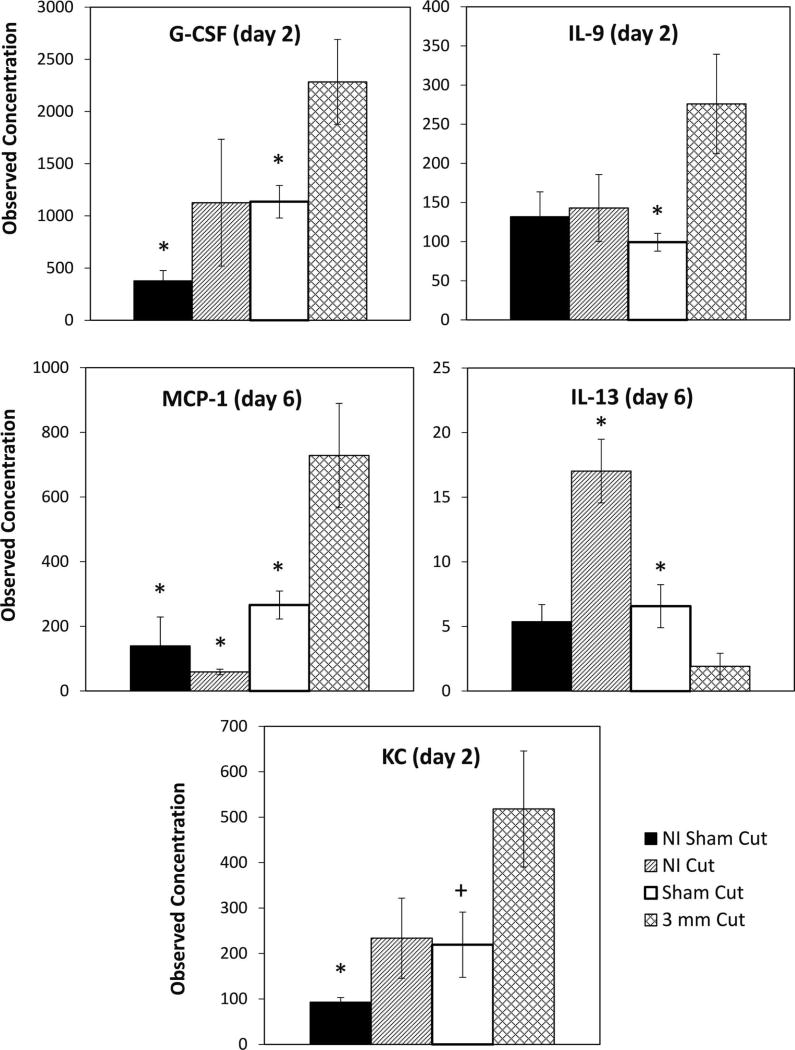FIG. 7.
Effects of protective wounding on radiation-induced plasma cytokine production in female mice. Mice were exposed to either 0 or 6.7 Gy and either received a 3-mm subcutaneous cut 15–20 min postirradiation or received a sham-cut. On days –1, 1, 2 and 6 postirradiation, peripheral blood was obtained and analyzed for plasma cytokines. On day 2 postirradiation, the observed concentration of G-CSF and IL-9 was significantly higher in the irradiated 3-mm cut mice than in the irradiated sham-cut mice; P = 0.0271 and 0.0274, respectively. Additionally, at day 2, the observed concentration of G-CSF was significantly higher in the irradiated 3-mm cut mice than in the nonirradiated sham-cut mice (P = 0.002). On day 6 postirradiation, significant differences between irradiated 3-mm cut mice and other groups were seen for observed concentrations of MCP-1 and IL-13. Irradiated mice that received a 3-mm cut showed higher MCP-1 levels than the nonirradiated sham-cut mice (P = 0.0006), the nonirradiated cut mice (P = 0.0005), and the irradiated sham-cut mice (P = 0.0241). Irradiated mice that received a 3-mm cut had a lower observed concentration of IL-13 than nonirradiated (NI) cut mice and irradiated sham-cut mice; P = 0.0009 and P = 0.0489, respectively. The observed concentration of keritinocyte chemoattractant (KC) in mice receiving a 3-mm cut after irradiation was significantly higher than in the nonirradiated sham-cut mice (P = 0.0125) and showed a trend towards significance compared to the irradiated sham-cut mice (P = 0.0660). All P values were determined using two-way t tests with unequal variance. Data from serum samples from 3 experiments were averaged (4–8 mice per group). Asteriks (*) indicate where P < 0.05 in the two-tail t test between that particular group and the cut group. Plus signs (+) indicate where P < 0.07 in the two-tail t test between that particular group and the cut group.

